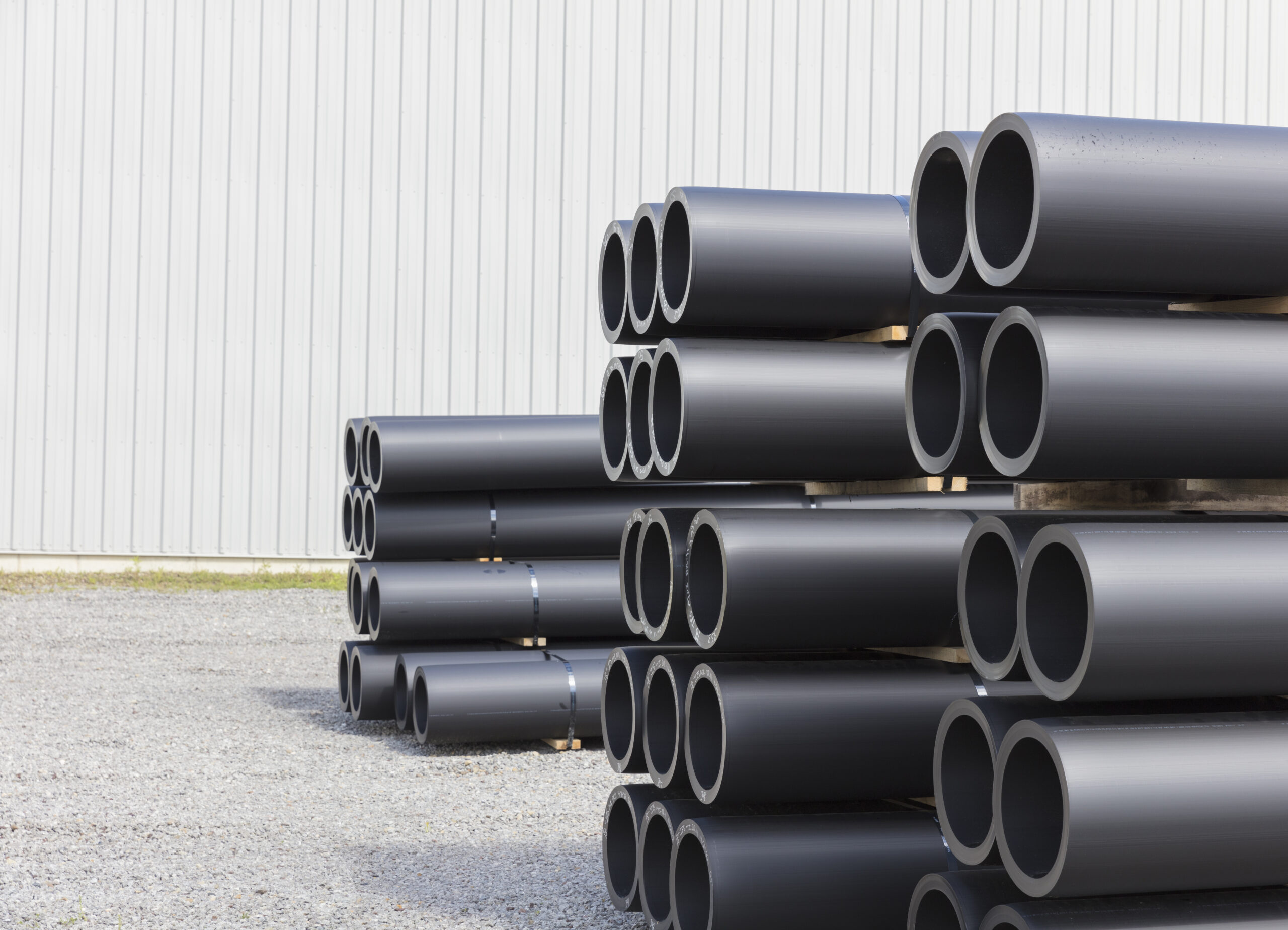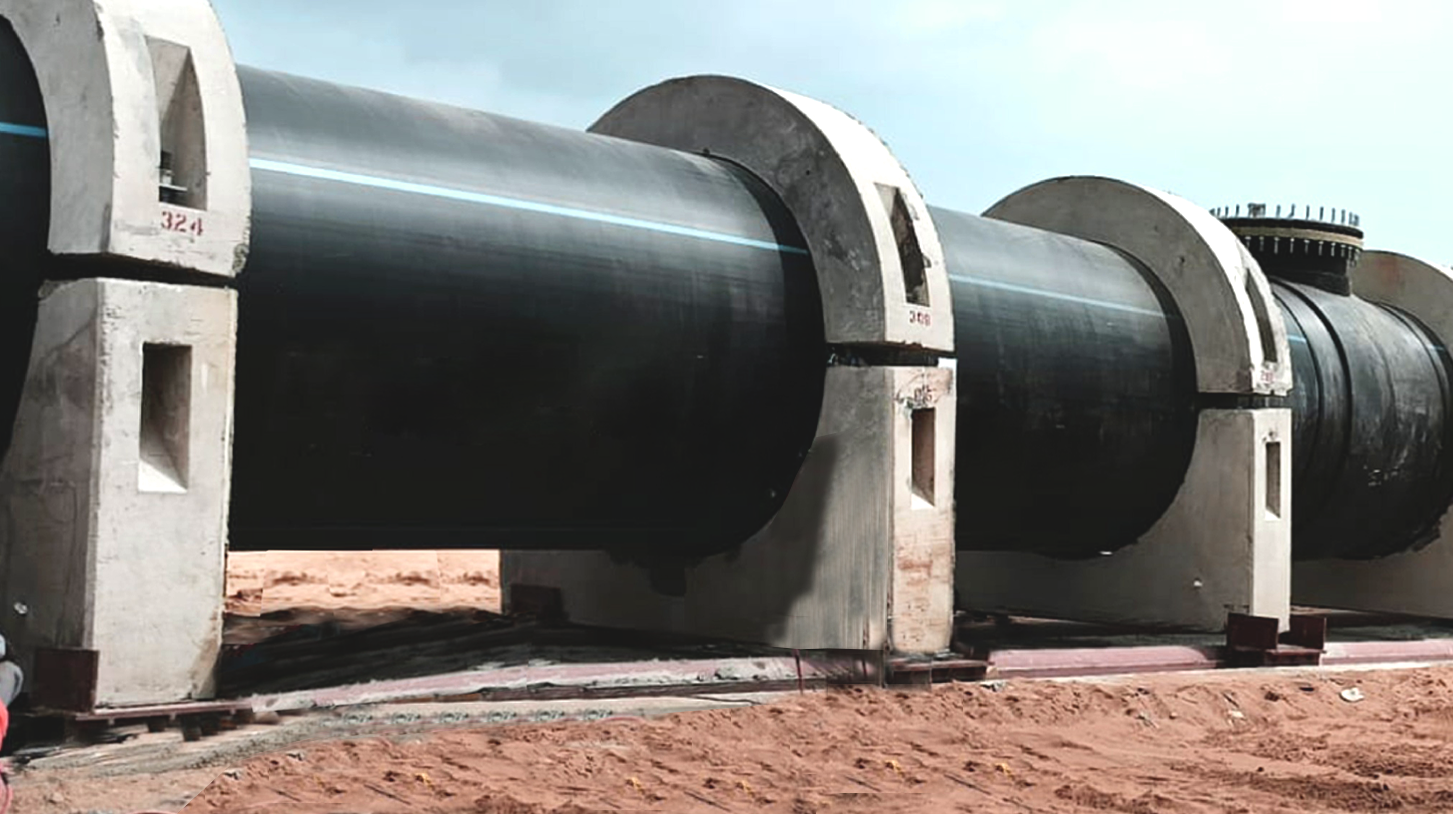The Definitive Handbook to Pipe Manufacturing Midland TX for Construction
Explore the Production Refine Behind High-Quality HDPE Pipe and Its Applications
The manufacturing process of top notch HDPE pipelines is detailed and systematic. It begins with the selection of raw materials that improve performance. Following this, ethylene undergoes polymerization to form material, which is then formed via extrusion. Quality control is extremely important, making sure that the end product meets rigid requirements. The journey of HDPE pipelines does not end with manufacturing. Their applications throughout different markets reveal a more comprehensive relevance worth taking a look at.
Recognizing HDPE: Qualities and Advantages

High-density polyethylene (HDPE) is a functional polycarbonate known for its longevity and resistance to various environmental variables. This material exhibits exceptional tensile toughness, making it suitable for requiring applications. Its low-density structure adds to a lightweight item, facilitating ease of taking care of and installment. HDPE additionally showcases amazing resistance to chemicals, which decreases deterioration when revealed to harsh materials.
The material's low wetness absorption further enhances its durability, making it perfect for usage in pipes and tank. Additionally, HDPE is resistant to ultraviolet (UV) radiation, making sure that items preserve their stability even when exposed to sunshine. Furthermore, its flexibility permits the production of intricate forms without compromising stamina. The environment-friendly nature of HDPE, often derived from recycled products, includes in its charm, promoting sustainable practices in manufacturing. In general, these homes and benefits make HDPE a preferred selection for numerous commercial and consumer applications.
Raw Product Selection for HDPE Manufacturing
The choice of basic materials for HDPE production is vital to confirm the end product satisfies the preferred specifications and high quality standards. High-density polyethylene (HDPE) is largely produced from polymerized ethylene, acquired from fossil fuels such as gas or petroleum. The high quality of these feedstocks greatly influences the mechanical and thermal buildings of the final HDPE.
Ingredients also play a substantial duty in enhancing HDPE's performance, consisting of anti-oxidants, UV stabilizers, and colorants, which boost sturdiness and resistance to environmental aspects. The option procedure have to take into consideration not only the chemical composition of the raw materials but additionally their handling characteristics to assure efficient production.
Additionally, the sourcing of basic materials need to prioritize sustainability and conformity with environmental regulations, as accountable practices are essential in today's market. Inevitably, mindful resources option lays the foundation for generating high-quality HDPE pipes appropriate for varied applications.
The Extrusion Refine: Forming HDPE Pipeline
The extrusion process plays a crucial function in forming HDPE pipelines, starting with meticulous product prep work strategies that assure suitable circulation and uniformity. Similarly essential is the style of the die, which directly influences the last measurements and surface area top quality of the pipe. With each other, these factors contribute considerably to the performance and high quality of HDPE pipe manufacturing.
Material Preparation Strategies
Efficient production of HDPE pipes starts with careful material prep work techniques, specifically the extrusion procedure. During this stage, high-density polyethylene material is initial dried out to get rid of moisture, ensuring optimal flow features. The material is after that fed into the extruder, where it undertakes heating and melting, transforming into a viscous state. This home heating process is carefully controlled to preserve the material's integrity and efficiency. The liquified HDPE is compelled with a die, forming it right into a continuous pipe form. Proper temperature level monitoring during extrusion is crucial, as it straight influences the product's residential properties and the end product high quality. Once shaped, the HDPE pipeline is cooled and reduced to specified sizes, all set for succeeding handling and applications.
Die Style Importance
Precision in die style plays a crucial function in the extrusion procedure of HDPE pipelines. The die acts as the final shaping tool, straight affecting the pipeline's dimensions, wall density, and surface coating. A properly designed die guarantees consistent material circulation, minimizing defects such as irregularities and weak spots. The geometry of the die have to be optimized to fit the details residential or commercial properties of HDPE, including its thickness and thermal habits throughout extrusion. In addition, the cooling rate of the material as it passes through the die can significantly affect the pipe's architectural honesty. Investing in advanced die technology is crucial for producers intending to produce premium HDPE pipelines that meet sector requirements and consumer assumptions.
Quality Assurance Procedures in HDPE Production
Although various elements influence the quality of HDPE pipeline manufacturing, effective quality assurance procedures are essential to assure uniformity and integrity in the end product. Key my latest blog post quality assurance practices consist of extensive material assessment, confirming that the raw polyethylene meets recognized standards for pureness and thickness. During the extrusion procedure, specifications such as temperature level, stress, and cooling time are closely checked to preserve dimensional precision and structural stability
On top of that, post-production screening is necessary; manufacturers often conduct hydrostatic tests to analyze the pipe's stamina and resistance to pressure. Visual evaluations for surface flaws even more boost quality control. Qualification from appropriate criteria organizations, like ASTM or ISO, supplies an additional layer of trustworthiness. By executing these detailed quality assurance measures, suppliers can reduce issues, boost performance, and ensure that the HDPE pipelines satisfy the certain requirements of different applications, inevitably causing client contentment and count on the item.
Applications of HDPE Pipe Throughout Industries
HDPE pipelines are utilized throughout various fields due to their longevity and versatility. In water distribution systems, they guarantee efficient distribution, while in wastewater management, they give reliable remedies for waste transport. Additionally, farming irrigation networks gain from HDPE's resistance to deterioration and flexibility, making it an ideal choice for modern farming techniques.

Water Circulation Equipments
A significant number of industries rely upon high-density polyethylene (HDPE) pipes for efficient water circulation systems. Recognized for their resilience and resistance to corrosion, HDPE pipelines are widely utilized in community water networks, agricultural irrigation, and commercial applications. Their light-weight nature helps with simple handling and setup, lowering labor expenses and time. Furthermore, HDPE pipelines can accommodate numerous stress degrees, making them appropriate for both low and high-pressure systems. Midland TX HDPE Pipe Fittings in Stock. The adaptability of the material permits seamless integration into existing facilities, lessening the demand for comprehensive excavation. HDPE's resistance to chemical seeping warranties that the water supplied stays risk-free and clean, making it a suitable choice for preserving the quality of safe and clean water throughout different sectors.
Wastewater Administration Solutions
Efficient water circulation systems likewise lead the method for ingenious wastewater management solutions, where high-density polyethylene (HDPE) pipes play a considerable role. Popular for their durability and resistance to deterioration, HDPE pipelines are suitable for delivering wastewater in numerous settings. Their adaptability permits for easy setup in intricate settings, reducing the requirement for considerable excavation. Additionally, HDPE's smooth indoor surface area decreases rubbing, boosting circulation rates and effectiveness. These pipes are likewise immune to chemical leaching, making sure that contaminants do not endanger the surrounding setting. Industries, towns, and treatment centers progressively rely upon HDPE pipes for their reliability and longevity, making them a favored selection for modern wastewater monitoring systems. This versatility emphasizes the crucial relevance of HDPE pipes across various applications.
Agricultural Irrigation Networks
Agricultural irrigation networks benefit greatly from using high-density polyethylene (HDPE) pipes, which offer efficient and reliable water shipment to crops. HDPE pipelines are lightweight, making them very easy to carry and set up, while their versatility permits numerous setups in diverse terrains. These pipes demonstrate exceptional resistance to corrosion, chemicals, and UV radiation, making sure toughness in rough farming atmospheres. Furthermore, their smooth indoor surface area reduces rubbing loss, optimizing water circulation and reducing energy expenses connected with pumping. The longevity of HDPE pipelines, usually exceeding half a century, adds to decrease upkeep and substitute costs. Farmers increasingly count on HDPE pipes to boost watering effectiveness and promote lasting farming practices, eventually leading to boosted plant returns and source preservation.

Future Patterns in HDPE Pipe Modern Technology
As the demand for lasting and efficient facilities grows, improvements in HDPE pipeline modern technology are positioned to transform different industries. Emerging trends consist of the combination of wise modern technologies, such as sensing units and IoT capacities, which help with real-time tracking of pipe problems, lowering maintenance costs and stopping leakages. Additionally, the advancement of advanced manufacturing strategies, such as 3D printing, is enabling the production of complicated, personalized pipeline styles that deal with specific project demands.
The emphasis on recycling and circular economic climate methods is driving the advancement of HDPE pipes made from recycled materials, boosting sustainability. Enhanced jointing approaches, such as electro-fusion and mechanical installations, are additionally enhancing installment effectiveness and integrity. The growing focus on environmental policies is pushing producers to take on greener production processes, ensuring that HDPE pipes not just fulfill industry criteria yet also promote a more lasting future for infrastructure advancement.
Often Asked Inquiries
How Does HDPE Compare to Other Plastic Materials?
HDPE surpasses several various other plastic materials pertaining to toughness, chemical resistance, and flexibility. Its low thickness and high tensile strength make it optimal for different applications, commonly exceeding options in both performance and durability.
What Are the Environmental Impacts of HDPE Production?
The ecological impacts of HDPE manufacturing include greenhouse gas discharges, power usage, and potential contamination from producing procedures. address In addition, incorrect disposal can bring about dirt and water contamination, increasing issues about long-term water heater overflow pipe eco-friendly results.
Can HDPE Pipeline Be Reused?
Yes, HDPE pipelines can be reused. Lots of facilities accept utilized HDPE for processing, changing it into brand-new products. This reusing contributes to sustainability initiatives, reducing plastic waste while conserving resources and energy in the production cycle.
What Is the Lifespan of HDPE Water Lines?

Exactly How Do Temperature Level Variants Affect HDPE Pipe Performance?
Temperature level variations considerably impact HDPE pipe efficiency, affecting adaptability and stamina. High temperatures can cause softening, while low temperature levels might cause brittleness, inevitably influencing the pipeline's sturdiness and suitability for numerous applications in diverse atmospheres.